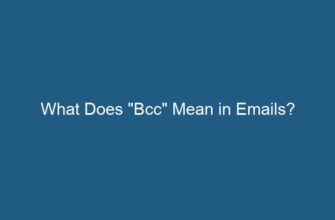In Java, dynamic binding refers to the process of determining at runtime which implementation of a polymorphic method to invoke based on the actual type of the object. This allows for flexibility and late binding of methods, enabling the program to decide the appropriate method to call based on the type of the object at runtime.
- Understanding Static vs Dynamic Binding
- Polymorphism and Inheritance
- How Dynamic Binding Works
- Objects
- Reference Variables
- Method Overriding
- Example of Dynamic Binding in Java
- Advantages of Dynamic Binding
- Flexibility and Extensibility
- Polymorphism
- FAQs
- 1. What is the difference between static binding and dynamic binding?
- 2. How is dynamic binding related to polymorphism?
- 3. Can dynamic binding be achieved without method overriding?
- 4. Is dynamic binding exclusive to Java?
- 5. Can dynamic binding be used with static methods?
- 6. What happens if a subclass does not override a method in its superclass?
- Conclusion
Understanding Static vs Dynamic Binding
Before delving into dynamic binding, it is important to understand the concept of static binding in Java. Static binding, also known as early binding, occurs when the compiler resolves method calls at compile-time based on the type of the reference variable.
On the other hand, dynamic binding, also referred to as late binding or runtime polymorphism, resolves method calls at runtime based on the actual type of the object. This allows for the invocation of different implementations of a method based on the object’s type, even if the reference variable is of a superclass or interface type.
Polymorphism and Inheritance
Dynamic binding is closely related to two fundamental concepts in Java – polymorphism and inheritance. Polymorphism allows objects of different types to be treated as objects of a common type, while inheritance enables the creation of hierarchies of classes, with subclasses inheriting properties and methods from their superclasses.
Polymorphism is achieved through method overriding, where a subclass provides its own implementation of a method defined in its superclass. When an overridden method is called on a superclass reference variable that points to a subclass object, dynamic binding comes into play to determine which implementation of the method to invoke.
How Dynamic Binding Works
The process of dynamic binding involves three key elements – objects, reference variables, and method overriding. Let’s explore each of these elements in detail:
Objects
In Java, objects are instances of classes that encapsulate state and behavior. Each object has a specific type, which is determined by its class. The type of an object determines the methods that can be invoked on it.
Reference Variables
A reference variable is a variable that holds the memory address of an object. In Java, reference variables are declared with a specific type, which can be a superclass or an interface. The type of the reference variable determines the methods that can be called on it at compile-time.
Method Overriding
Method overriding is a feature of object-oriented programming that allows a subclass to provide a different implementation of a method defined in its superclass. To override a method, the subclass must have the same method signature (name and parameters) as the superclass.
When an overridden method is called on a reference variable, dynamic binding comes into play to resolve the method call at runtime based on the actual type of the object.
Example of Dynamic Binding in Java
Let’s illustrate dynamic binding with an example. Consider the following classes:
| Shape | Circle | Rectangle |
|---|---|---|
| Methods: getArea() |
Methods: getArea() |
Methods: getArea() |
The Shape class is the superclass, while Circle and Rectangle are subclasses that inherit from Shape. Each class defines a method called getArea(), but provides a different implementation.
Now, let’s create objects of type Circle and Rectangle, but assign them to reference variables of type Shape:
Shape circle = new Circle();
Shape rectangle = new Rectangle();
Even though the reference variables are of type Shape, they point to objects of type Circle and Rectangle, respectively.
If we invoke the getArea() method on the circle and rectangle reference variables, the appropriate implementation of the method will be dynamically bound and invoked based on the actual type of the objects:
double circleArea = circle.getArea(); // Calls the getArea() method in the Circle class
double rectangleArea = rectangle.getArea(); // Calls the getArea() method in the Rectangle class
Dynamic binding ensures that the getArea() method called on the Shape reference variables actually invokes the corresponding implementation in the Circle and Rectangle classes, even though the reference variables are of type Shape.
Advantages of Dynamic Binding
Dynamic binding provides several benefits in Java programming:
Flexibility and Extensibility
Dynamic binding allows for flexible and extensible code by enabling the addition of new subclasses without modifying existing code. The new subclasses can provide their own implementations of inherited methods, which will be dynamically bound at runtime.
Polymorphism
Dynamic binding is essential for achieving polymorphism in Java. Polymorphism allows for the writing of generic code that can work with objects of different types. By treating objects of different subclasses as objects of a common superclass, dynamic binding ensures that the appropriate method implementation is invoked based on the actual type of the object.
FAQs
1. What is the difference between static binding and dynamic binding?
Static binding occurs at compile-time and resolves method calls based on the type of the reference variable, while dynamic binding occurs at runtime and resolves method calls based on the actual type of the object.
2. How is dynamic binding related to polymorphism?
Dynamic binding is essential for achieving polymorphism in Java. It allows objects of different types to be treated as objects of a common type, enabling the invocation of different implementations of a method based on the object’s type at runtime.
3. Can dynamic binding be achieved without method overriding?
No, dynamic binding relies on method overriding. Only overridden methods can be dynamically bound at runtime based on the actual type of the object.
4. Is dynamic binding exclusive to Java?
No, dynamic binding is a fundamental concept in object-oriented programming and is supported by many other programming languages, including C++, C#, and Python.
5. Can dynamic binding be used with static methods?
No, static methods are resolved at compile-time through static binding and cannot be dynamically bound based on the actual type of the object.
6. What happens if a subclass does not override a method in its superclass?
If a subclass does not override a method in its superclass, it inherits the implementation of the method from the superclass. Dynamic binding will still occur when the method is invoked on an object of the subclass, but the superclass implementation will be executed.
Conclusion
Dynamic binding is a fundamental concept in Java that allows for flexibility, extensibility, and polymorphism in object-oriented programming. By resolving method calls at runtime based on the actual type of the object, dynamic binding enables the invocation of different implementations of a method based on the object’s type. Understanding dynamic binding is essential for writing robust, reusable, and maintainable Java code.










